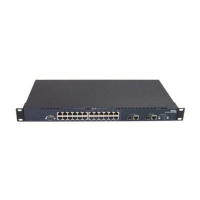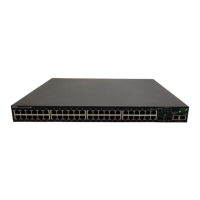256 BigIron RX Series Configuration Guide
53-1002253-01
General operating principles
9
As shown in Figure 17, each LLDPDU has three mandatory TLVs, an End of LLDPDU TLV, plus
optional TLVs as selected by network management.
FIGURE 17 LLDPDU packet format
Each LLDPDU consists of an untagged Ethernet header and a sequence of short, variable length
information elements known as TLVs.
TLVs have Type, Length, and Value fields, where:
• Type identifies the kind of information being sent
• Length indicates the length (in octets) of the information string
• Value is the actual information being sent (for example, a binary bit map or an alpha-numeric
string containing one or more fields).
TLV support
This section lists the LLDP TLV support.
LLDP TLVs
There are two types of LLDP TLVs, as specified in the IEEE 802.3AB standard:
• Basic Management TLVs consist of both optional general system information TLVs as well as
mandatory TLVs.
Mandatory TLVs cannot be manually configured. They are always the first three TLVs in the
LLDPDU, and are part of the packet header.
General system information TLVs are optional in LLDP implementations and are defined by the
Network Administrator.
Brocade devices support the following Basic Management TLVs:
• Chassis ID (mandatory)
• Port ID (mandatory)
• Time to Live (mandatory)
• Port description
• System name
• System description
• System capabilities
• Management address
• End of LLDPDU
Chassis ID
TLV
Port ID
TLV
Time to
Live TLV
Optional
TLV
Optional
TLV
End of
LLDPDU TLV
...
MM M M
M = mandatory TLV (required for all LLDPDUs)

